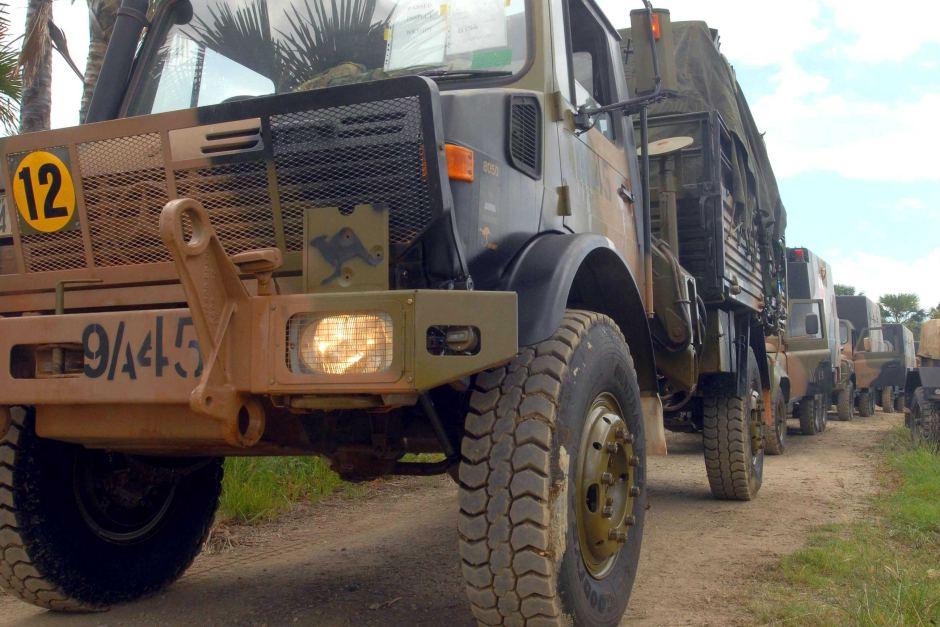Having to resist the urge to take a cheap shot is an occupational hazard in my business, and one that I don’t always successfully avoid. Once such was the title I gave to a review of Project LAND 121 ‘Overlander’ (replacement of Army’s 7,000 field vehicles and trailers). Published in the 2010 Budget Brief, I called it ‘How many DCPs does it take to buy a truck?’
One of my first jobs in Defence back in 1994 was to conduct analysis in support of Overlander (and the then-Army 21 program), and I wondered even then why this was being made so complicated. To see it still making its way through the system 16 years later really had me scratching my head. Five years later, Overlander is now in its third decade; an acerbic Tweet last week observed that it’s now been running several times longer than WW2.
Two things happened last week that made me think about it again. First, I heard a talk from DMO’s Land Systems Division on the project at ASPI’s land forces conference. Then, I got a copy of the Australian National Audit Office’s new report on LAND 121 Phase 3B (replacement of medium and heavy vehicles). Those two sources allow us to piece together an interesting, if doleful, story.
The conference talk very much made the point that it’s not just about trucks, because the modern Army requires its vehicles to be integrated into its wider communications and command and control system. As the land forces move into the digital age, each vehicle becomes a node in Army’s network. But we know from far too many previous experiences that systems integration is a fraught part of projects. In my talk at the same conference, I noted the time it has taken to get the Tiger helicopter to communicate effectively with the rest of Army.
Like the helicopters, the schedule for the acquisition of vehicles has slipped as well. When the first second-pass approval was made back in 2007 the Final Operating Capability (FOC) was initially expected to be in 2016. (Note: ‘first second pass’ isn’t a typo: after a project reset, there was a ‘second second pass’ in 2013, with an ‘interim pass’ in between for good measure.) After the interim pass, FOC was expected in 2019. Now the estimate is 2023, seven years late (like Tiger). Of course, that could slip too as we get to the build, systems integration and delivery. ANAO notes (as usual) that cost and schedule risks tend to rise at the systems integration phase, adding that ‘Defence will need to maintain a focus on managing the remaining integration issues’. The ANAO must have their fingers crossed when they write these words, given the sorry history of this and many other projects.
The plethora of passes follows the cancellation of contract negotiations with the preferred supplier identified through a tender process in 2005–2007. The process suffered from a litany of shortcomings, but at the heart of the problem was another ‘old faithful’ error: ‘Defence originally considered that the medium and heavy vehicle acquisition was a relatively low risk military off-the-shelf procurement’. Read the report for the story, but it was rushed, with insufficient testing and poor communication of assessed risk. Once reality set in, another tender process was launched, and more time ticked away.
As a result, we’re also seeing other time honoured effects at work—the cost to capability and the operating budget of keeping older platforms in service. ANAO make it clear that there’s been a significant financial price to pay:
The delays in the medium and heavy fleet acquisition have placed considerable pressure on the existing Unimog and Mack vehicle fleet, which has now well exceeded its life-of-type and is increasingly difficult and costly to maintain. …the average sustainment cost per vehicle for the Mack fleet has increased by some 80% between 2009–10 and 2013–14, reflecting the advanced age of the fleet and difficulty in acquiring spare parts.
And it’s not just a dollar cost; capability is getting shaky:
… one third of the South Queensland Mack [fleet] is in the process of being written off due to excessive rust following annual technical inspections. …based on vehicle availability and the number of platforms written off each year, the Mack fleet will have difficulty supporting force generation activities from 2016 and in meeting strategic guidance from 2019.
It’s hard to know what to say about all this, and it’s all drearily familiar. The Army acquisition folk talking last week seemed to have a good grasp of what’s required, but the system as a whole is seemingly incapable of producing a sensible and timely outcome. The First Principles Review is throwing the whole lot up in the air, and it remains to be seen what we’ll get next time around, but the precedents aren’t good. I can’t help but think it’s time to take a much bolder approach—perhaps finding a private sector complex acquisition specialist, telling them ‘off the shelf by strong default’, and outsourcing the lot.
